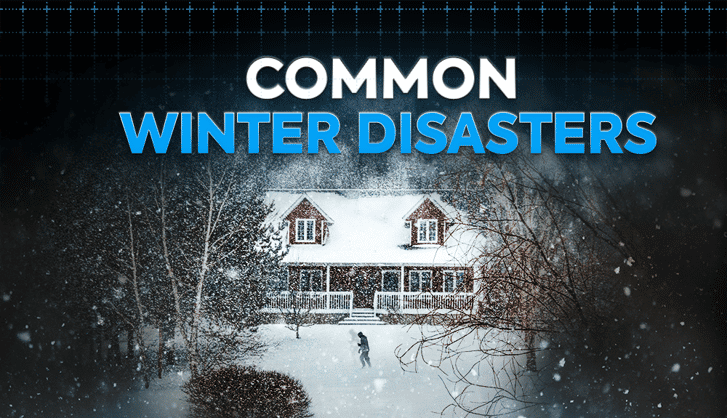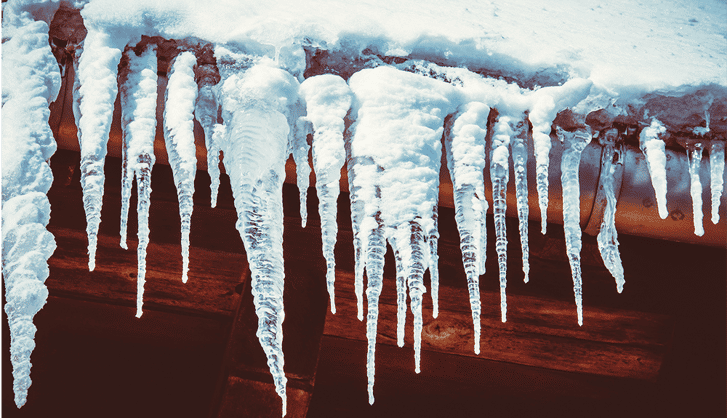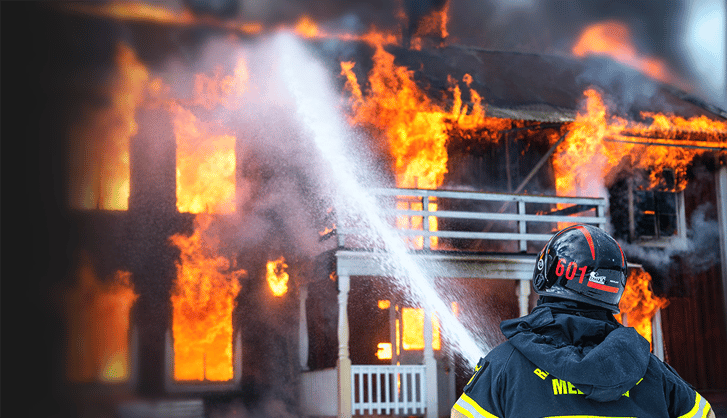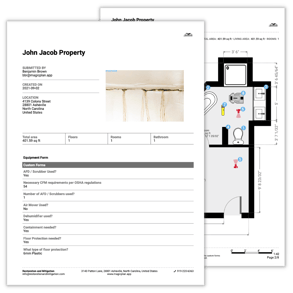Restoration
Common Winter-Time Disasters That Require Restoration
 Severe winter weather can pack a punch: sustained low temperatures, powerful winds and a lot of unwanted precipitation. All of these conditions can result in damage to residential properties. But most homeowners are not equipped to deal with these types of unexpected issues. So, they reach out to local professionals who can help them. If you run a disaster restoration company, your services could be in high demand.
Severe winter weather can pack a punch: sustained low temperatures, powerful winds and a lot of unwanted precipitation. All of these conditions can result in damage to residential properties. But most homeowners are not equipped to deal with these types of unexpected issues. So, they reach out to local professionals who can help them. If you run a disaster restoration company, your services could be in high demand.
Let’s review some common reasons why homeowners may request your assistance during the winter. And then we will finish up with three tips to help you document those new jobs.
Winter Storm Damage
The winter season can unleash harsh storms that cause sudden and severe damage. For example:
- High winds may impact the exterior of a house by ripping off shingles, siding or soffits. The resulting damage can let in moisture from snow, rain, sleet and meltwater.
- Heavy hail or sleet can hammer against siding, doors and windows, leaving behind chips, cracks, dents and holes that can cause cold air leaks.
- Snow, ice and strong winds can knock down large tree limbs – or even entire trees – that end up crashing into homes and garages.
Roof Leaks
Roof leaks can happen year-round, but often occur more during periods of heavy winter precipitation. This can be disastrous. Even a small leak can cause interior water damage in just a matter of minutes. This is particularly true around skylights, roof vents and damaged shingles, all points of weakness that increase the risk of water leaking inside.
Ice Dams
Heavy snow on the roof of a home will often result in the formation of ice dams. An ice dam occurs when the snow begins to melt, but then freezes at the edge of the roof, along eaves and in gutters. The resulting wall of ice prevents thaw runoff from draining safely through proper channels. This trapped water can then leak into the home – down interior walls and into ceilings and insulation – causing considerable property damage. It’s a distressing problem that happens all too frequently during winter in colder northerly regions.
Collapsed Gutters
If enough heavy ice forms in a home’s gutters, gravity will force them down to the ground. That means any water draining off the roof will fall directly alongside the structure’s foundation… and then will likely work its way inside.

Collapsed Roof
According to the Insurance Institute for Business and Home Safety, packed snow measuring more than two feet high may cause a home’s roof to collapse. This type of incident is more likely in areas where the weather is too cold to allow fallen snow to melt quickly. Flat roofs are especially vulnerable to cave-ins, but sloped roofs also can collapse from the weight of heavy snow.
Burst Pipes
When the outside temperature turns frigid, water pipes in unheated spaces become vulnerable to freezing and bursting. That’s because water sitting inside pipes will expand as it freezes, forcing its way out and causing the walls to rupture. Of course, that spells bad news once water begins spilling out. Even a single burst pipe can result in extensive water damage, and may even lead to serious mold issues.
Failed Sump Pump
A sump pump is usually located at the lowest point of a basement, and water in its basin is prone to freezing when the outside temperature plummets. Once that water begins to freeze, the pump has to work extra hard to try to move it away from the home. This scenario can cause it to overheat and completely shut down.
Fire Damage
House fires are exceedingly common during the winter months. Why is that? Well, the National Fire Protection Association states that heating is the leading cause of home fires. Space heaters are the type of equipment most often involved in home-heating-equipment fires. But poorly maintained furnaces, fireplaces and electrical systems also can cause fire and smoke damage. Wood stoves, candles and lit-up holiday decorations also contribute to an increased risk of fire during December, January and February.
Flooding
Rapidly melting snow and ice can saturate the soil around a home’s foundation. And the water may eventually end up flooding the basement, causing rotting, staining and mold growth. Even just one foot of snow can turn into an inch of water – enough to creep into foundational cracks and then work its way inside.
3 Tips for Documenting Winter-Disaster Projects
As indicated above, many types of winter-time disasters can affect residential properties. So, you want to make sure you are fully prepared to document the scene at every jobsite.
1. Arrive ready to snap photos. Your best tool for this is a fully charged, late-generation mobile device that has a high-quality camera. Be sure to take an adequate number of photos of all visible damage, both inside and outside.
2. Diagram interior damage with floor plans. This involves creating a floor plan of each affected room inside the home, and then marking up the plan with notes that describe your findings.
3. Be prepared to create and share a detailed report. Complete with photos, floor plans and notes that summarize your findings, this document will help the homeowner come to an agreement with their insurance company. Plus, it will help you plan and execute any required restoration work.
Fortunately, you can complete all three steps rapidly if you have a high-quality floor plan app loaded on your mobile device!
So, make sure you select a good app that is proven effective in the field. That way, you’ll be able to document winter destruction in record time, which empowers you to help homeowners as quickly as possible.
Continue reading our guide on winter-weather tips for your business.
Short-staffed? Read our guide on how to recruit disaster restoration employees before Winter begins.
Related articles
featured
/Restoration
The Definitive Restoration Workflow Guide: How to Make Every Job Flow Seamlessly
featured
/Restoration
6 Tips for Optimizing Restoration Data Privacy (and Why That Matters)
featured
/Claims Adjuster
/Restoration
Scope of Work vs. Estimate: What’s the Difference in Restoration?

Zuzanna Geib
Team Lead Marketing


